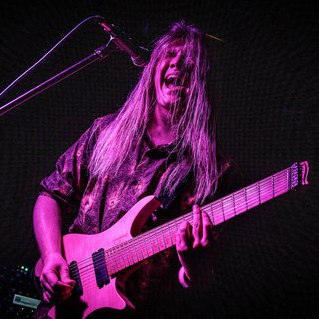“I wanted to sound like Jimi Hendrix on his first album. It was good to have that there for a while”: Brian May reveals the off-the-wall Red Special mod from his pre-Queen days that he ended up removing
The wild electronics upgrade didn't last for very long, but it can be heard on some of May's earliest pre-Queen recordings
Brian May and his Red Special electric guitar are inseparable, and across his career the Queen legend has used the humble DIY build to cement his status as a bona fide rock legend. But that doesn’t mean his beloved six-string is immune to criticism.
Back in 1963 – with a Fender, Gibson, or Höfner guitar way out of the May family budget – Brian and his father set to work on a custom guitar, which would eventually become the iconic Red Special.
A handful of mods were later introduced to the guitar as time went on, with May at one point integrating a full-blown distortion circuit into the instrument. However, at a recent Red Special meet-up event in the UK, May revealed he ended up removing the circuit because he “just didn't like the sound of it”.
“It was very early I put this on,” May says [transcribed by Ultimate Guitar]. I bought a Vox Distortion Booster, which is a red oblong box, a die-cast box. I still have it but I took the guts of it out and put it in here.”
The integration of the tiny stompbox came about because May “wanted to sound like Jimi Hendrix's sound on his first album”.
“But Jimi Hendrix didn't use a fuzz box for very long,” he goes on to explain. “He went back to using the distortion of the amps. [I watched a] clip of Eddie Van Halen the other day where he said, 'I don't have any fuzz boxes or distortions. I just have a guitar and the amp.' So, I feel like the simplicity is the best way.”
Summarizing the trials and tribulations of modding guitars, May says there were some benefits to having the distortion circuit, but it was ultimately a mod that failed.
All the latest guitar news, interviews, lessons, reviews, deals and more, direct to your inbox!
“It was good to have that there for a while, the fuzz box,” he reflects. “Especially when you're playing in a place where you can't turn up very loud, that would be very useful. But I just didn't like the sound of it, to be honest, very much.”
The circuit did stay in his good graces long enough to feature on a few recordings, though, and can be heard on Step On Me from his pre-Queen outfit, Smile.

The future of the Red Special now lies in Gibson’s hands, after the guitarist was announced as a member of the Gibson family earlier this year. The prospect of Gibson-made Red Specials, then, is an exciting one, especially considering the developments of its Murphy Lab aging processes.
For the past 20 years, the guitar has been mass-produced under the Brian May Guitars moniker, but May has already admitted that “it would be lovely to have an edition of the Brian May guitar based in the States”.
Reflecting on the building process behind the original Red Special, May adds: “I spent hundreds of hours making it with my dad. We'd make mistakes, we didn't have electric tools. It was made with chisels and sandpaper.
“The guitar became famous before I did. When we started, the guitar was viewed as the only interesting thing about the group by some people. I think she'll last just about as long as I do as a functional unit.”
While May has played other guitars at different points in his career, he remains fiercely loyal to the instrument, so much so that he convinced Queen's second guitarist, Jamie Moses, to switch to a Red Special.
A freelance writer with a penchant for music that gets weird, Phil is a regular contributor to Prog, Guitar World, and Total Guitar magazines and is especially keen on shining a light on unknown artists. Outside of the journalism realm, you can find him writing angular riffs in progressive metal band, Prognosis, in which he slings an 8-string Strandberg Boden Original, churning that low string through a variety of tunings. He's also a published author and is currently penning his debut novel which chucks fantasy, mythology and humanity into a great big melting pot.


